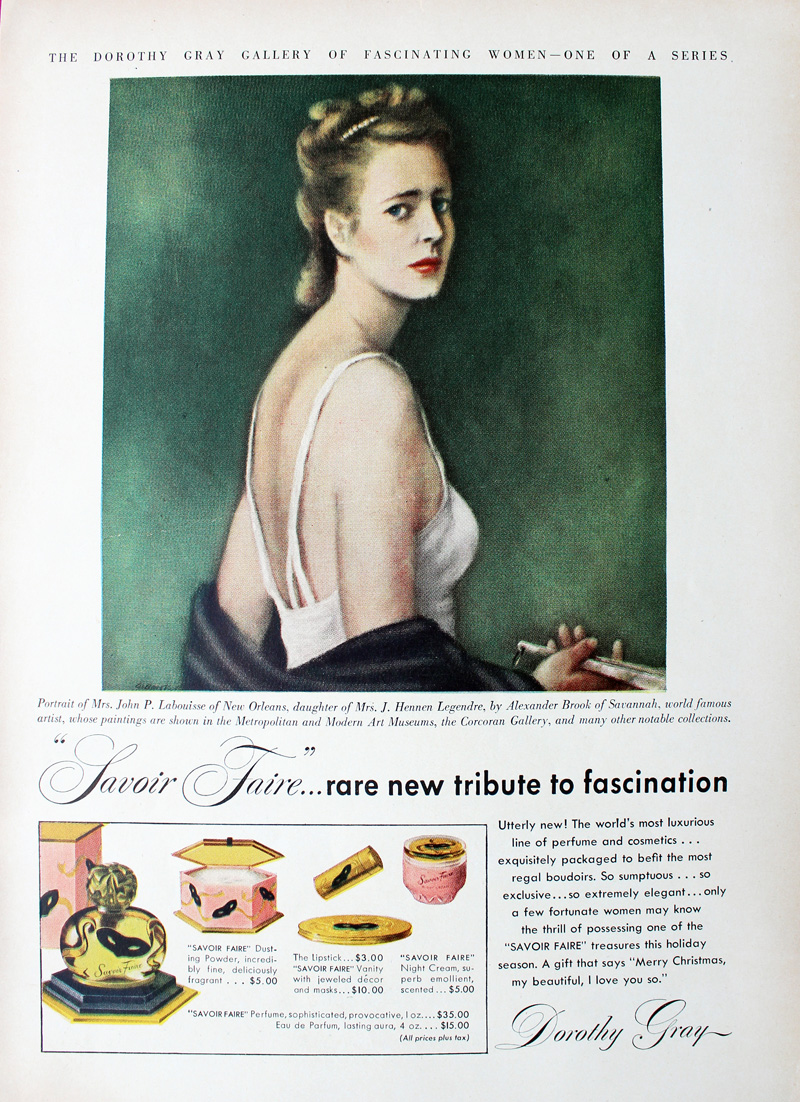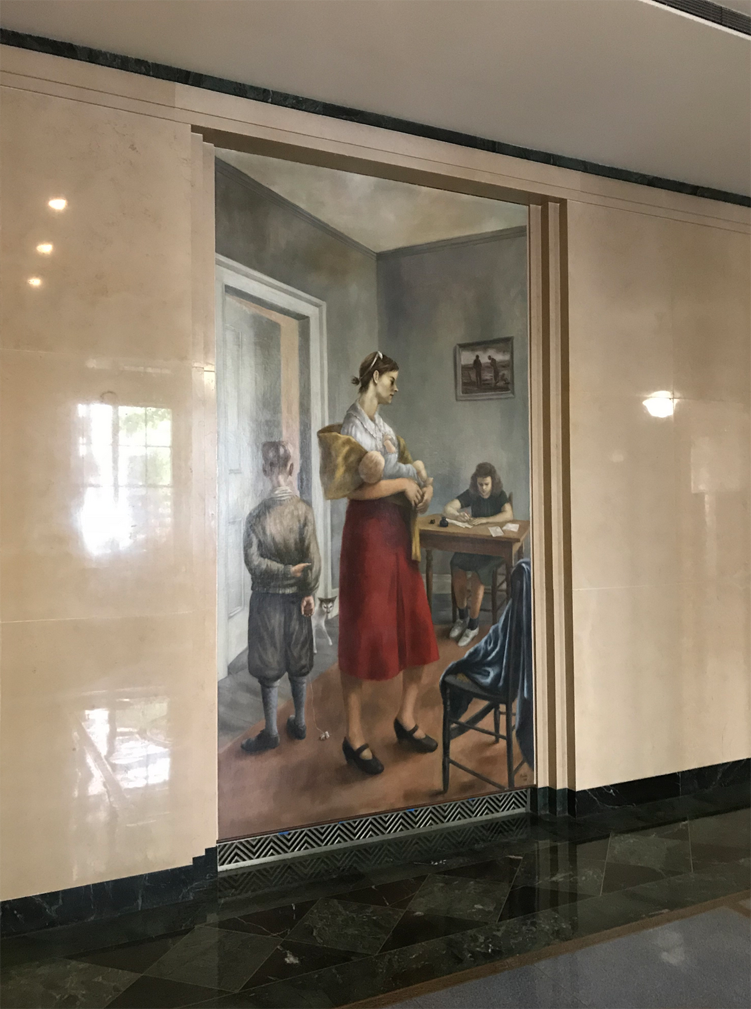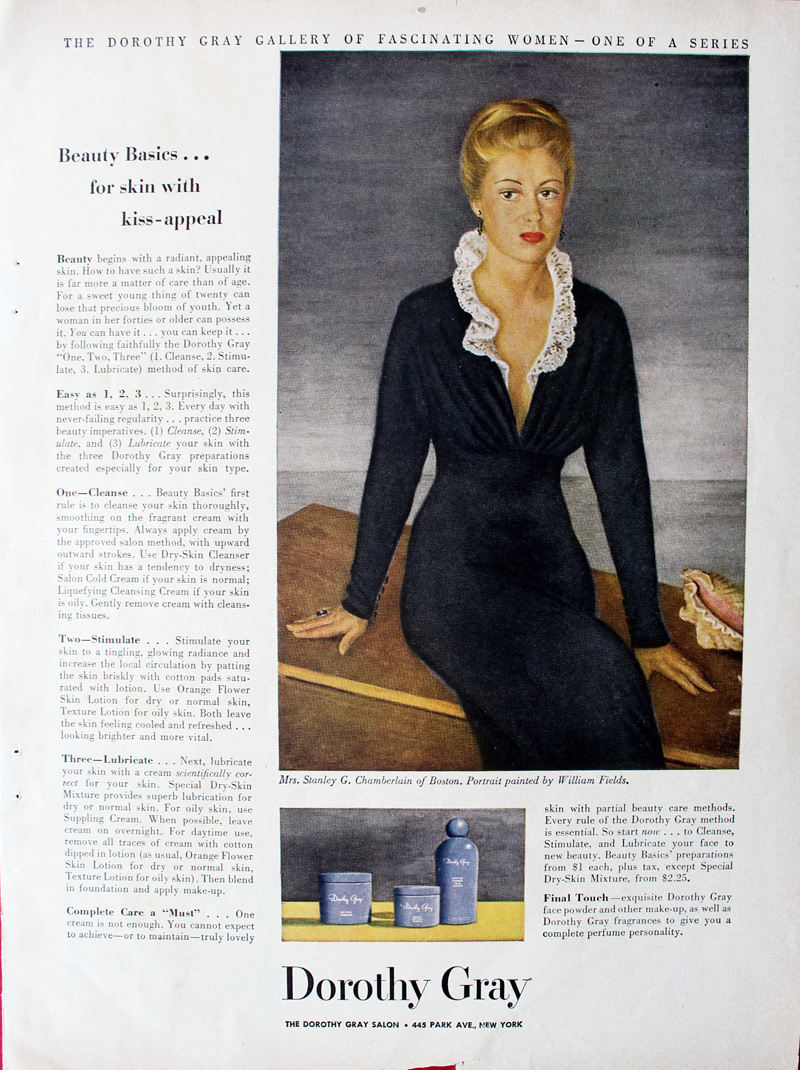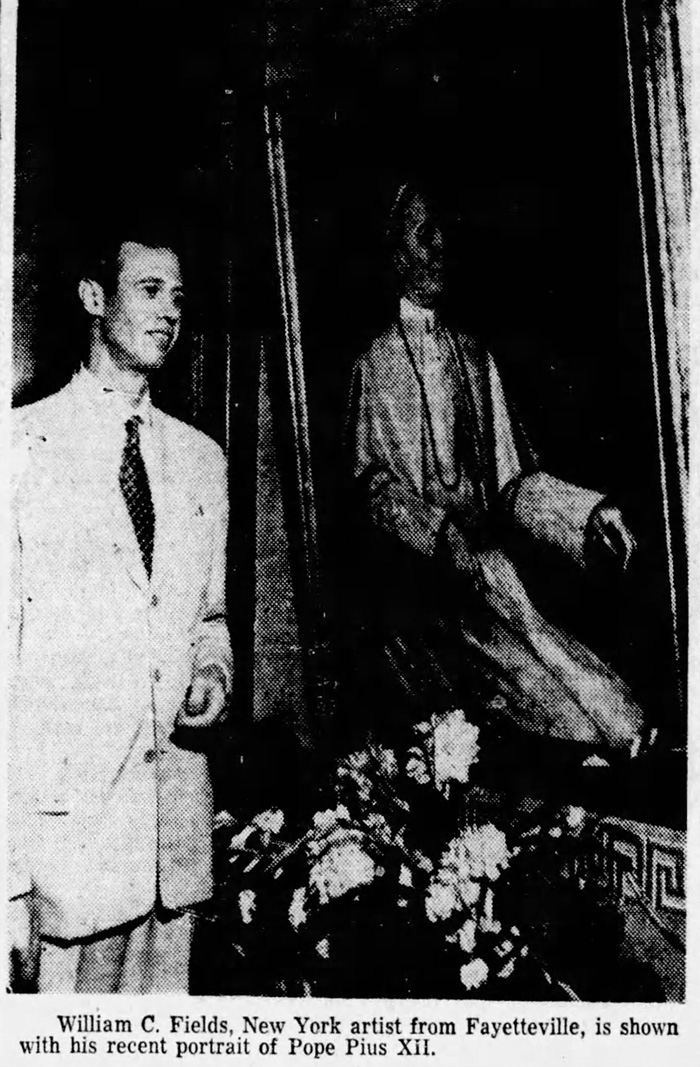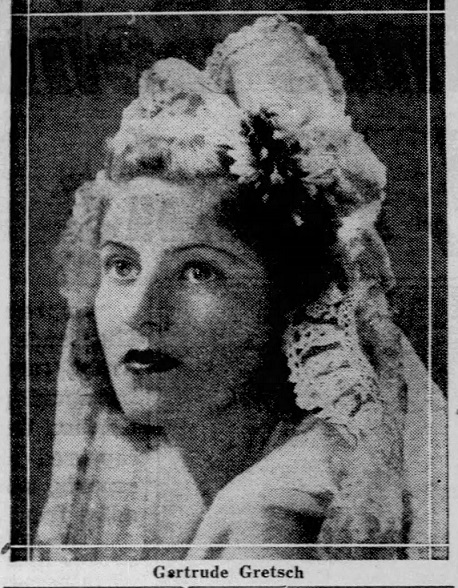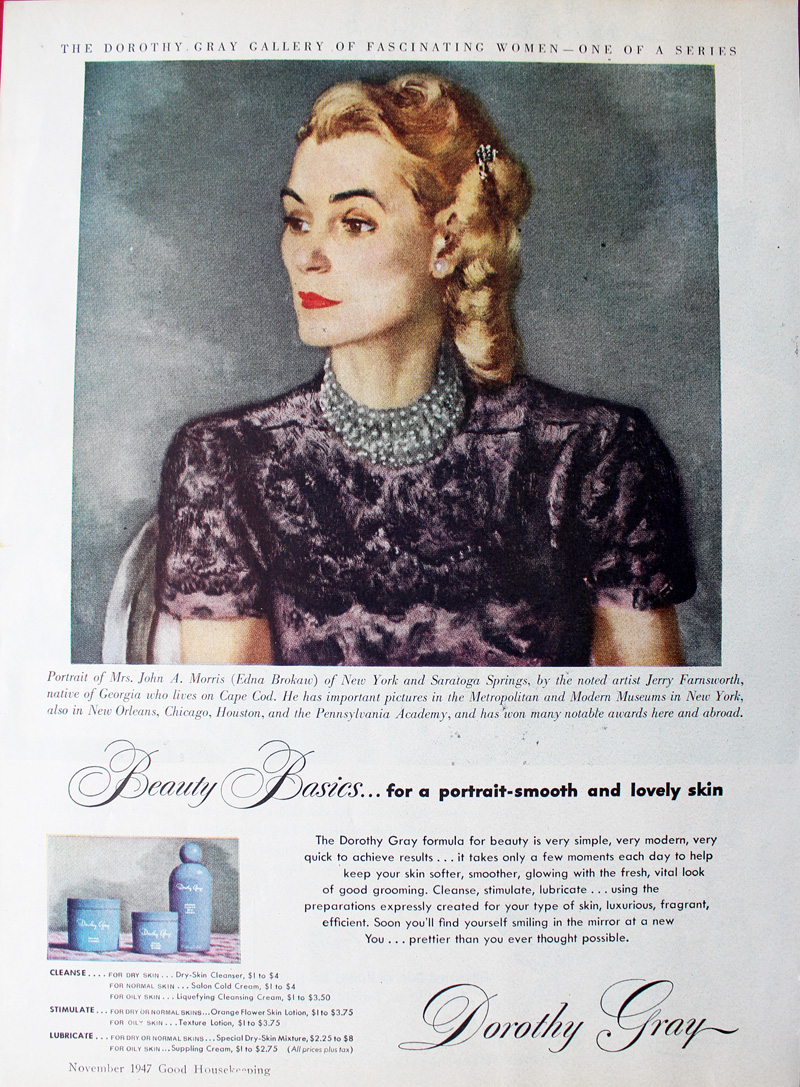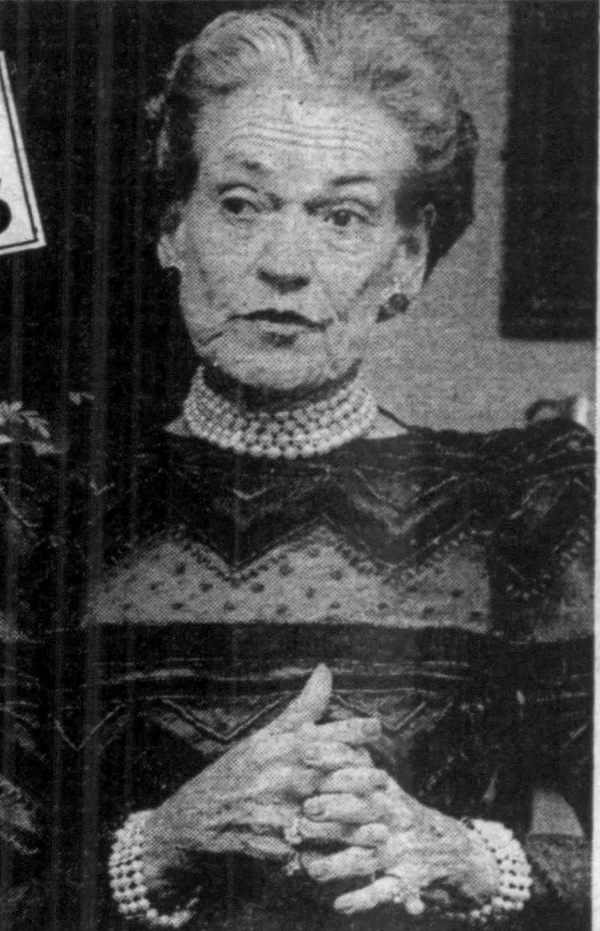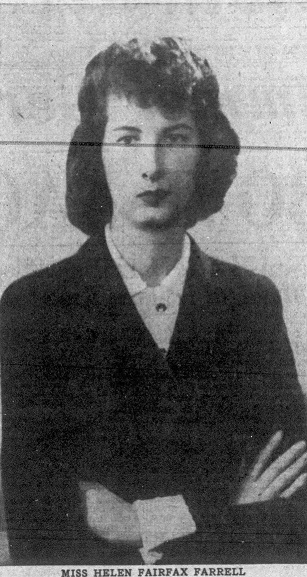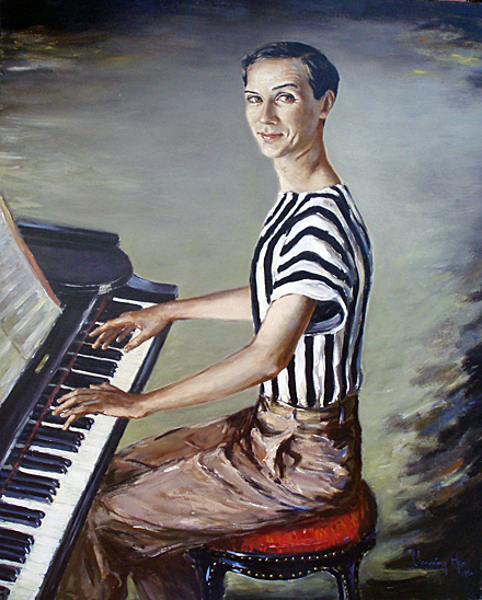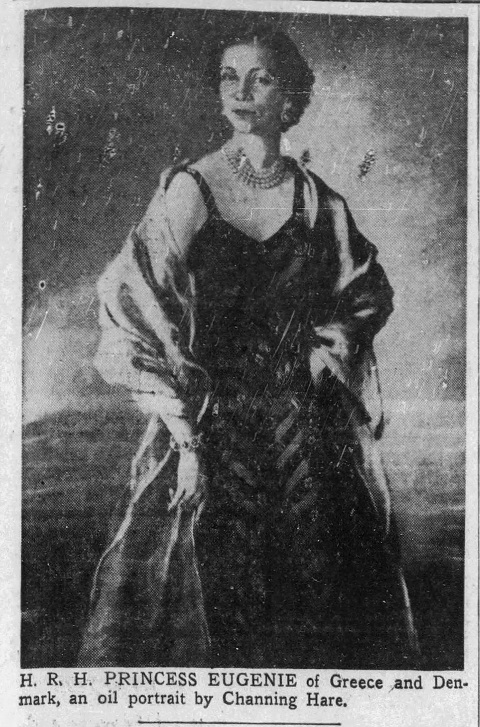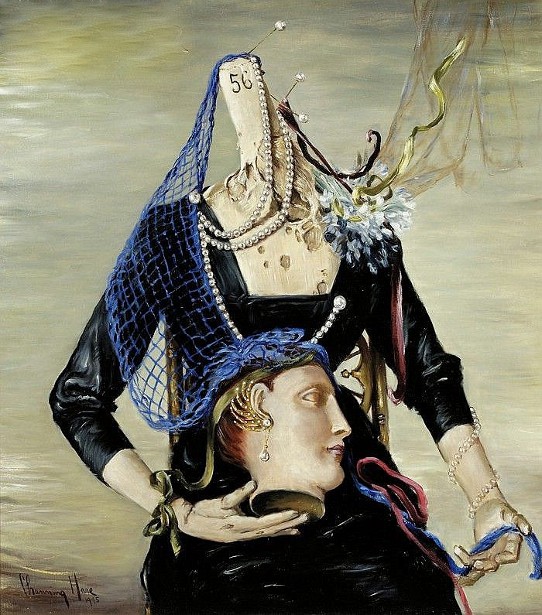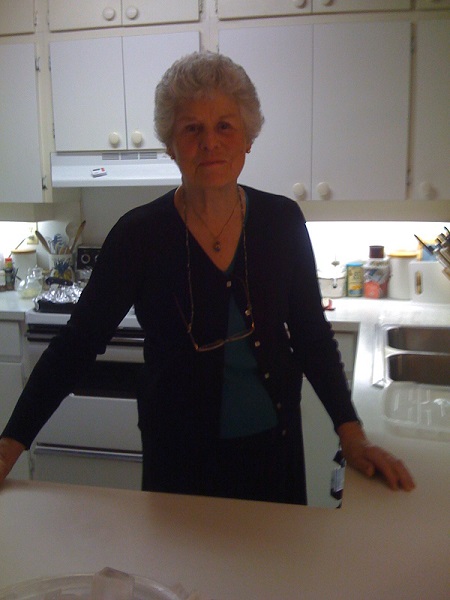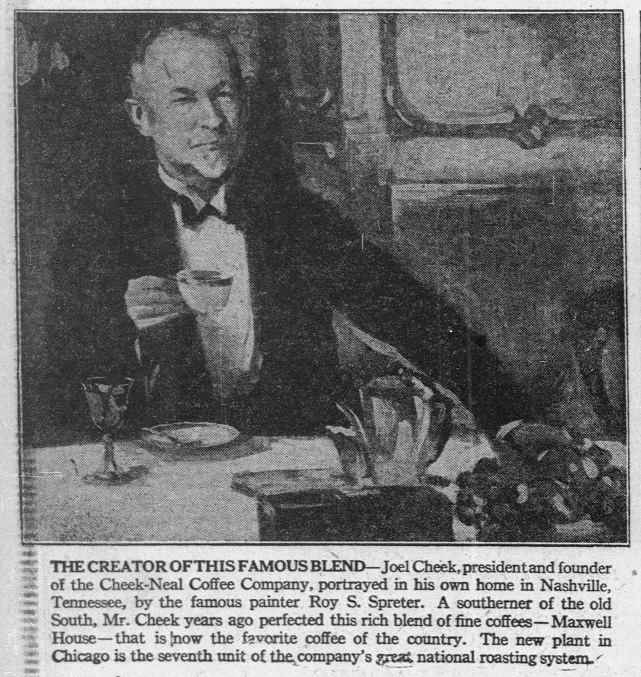From 1947-1949, the Dorothy Gray brand ran a series of ads featuring portraits of "fascinating women". I don't know why I'm covering them given that they're all white, upper-crust socialites who for the most part didn't do much besides existing while rich, but I guess my insatiable curiosity about vintage advertising got the better of me. I was determined to find out more about these ladies and the artists who painted their portraits in the hopes of figuring out why Dorothy Gray embarked on this campaign. So with that, here are brief bios of 6 of the women and the artists, along with a couple of examples of their other work. Stay tuned for part 2 to see the other five women featured and some theories about the campaign.
We'll start with the ladies that I couldn't find much info on. First up is Mrs. John P. Labouisse (1911-1984). Near as I can figure, Mrs. Labouisse's maiden name was Olive May Moore. Both she and her husband came from prominent New Orleans families. They had one child in 1935, who passed away in 2005. I'm not sure if it's intentional, but I find it interesting that the ad copy mentions that the packaging can accommodate "the most regal boudoirs," while Olive is portrayed what appears to be a fancy peignoir or dressing gown, more suitable for the bedroom than daytime wear. Then again, I'm no fashion historian so I might be completely off base.
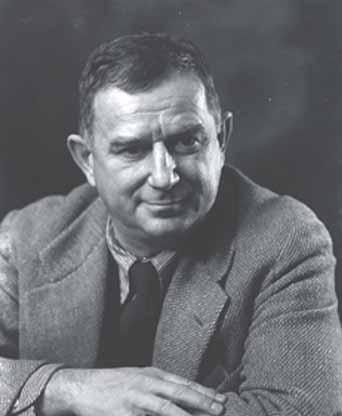 Alexander Brook (1898-1980) was a New York-based Realist painter known for his portraits and landscapes. While recovering from a bout of polio at the age of 12, he became interested in art. A few years later he enrolled at the Art Students League, and by the 1920s he was exhibiting at what would become the Whitney Museum. Brook was one of the most highly renowned American painters of his time, having multiple solo exhibitions across the country. Personally, I can't say I'm fond of his work. There's a sadness about his subjects that I'm not sure comes from the way he chose to paint them or if they were melancholy on their own.
Alexander Brook (1898-1980) was a New York-based Realist painter known for his portraits and landscapes. While recovering from a bout of polio at the age of 12, he became interested in art. A few years later he enrolled at the Art Students League, and by the 1920s he was exhibiting at what would become the Whitney Museum. Brook was one of the most highly renowned American painters of his time, having multiple solo exhibitions across the country. Personally, I can't say I'm fond of his work. There's a sadness about his subjects that I'm not sure comes from the way he chose to paint them or if they were melancholy on their own.
In any case, Brook would often paint his first impression of his sitters to capture a truer likeness. "When I do a portrait, whether it is one of my own choice or a requested commission of someone I hardly know, I find that my first impression of the proposed sitter is usually the one I strive to paint…whenever I hold closely to my original, instantaneous observation or try to emphasize even more the qualities I saw in my first conception, I paint with greater ease and the result is more satisfactory to me. To be able to retain and paint the spirit of what was seen in my first glance gives me a freer rein to achieve a more individual result than would a careful analytical conclusion." (quoted in the Daily Oklahoman, May 29, 1949)

(image from pinterest)
But perhaps what I'm interpreting as sadness is actually "sensitive character study and introspective mood," according to a 1981 re-evaluation of Brook's work in the New York Times. The article also notes that the once tremendously popular genre of World War I figurative portraits had gone out of style once abstract expression rolled in after the second World War, but made a comeback in the late 1970s and early '80s as a result of the rekindled interest in realism. Hence Brook's oeuvre being re-examined then. To my knowledge there has not been a third massive exploration of his work since the early '80s.
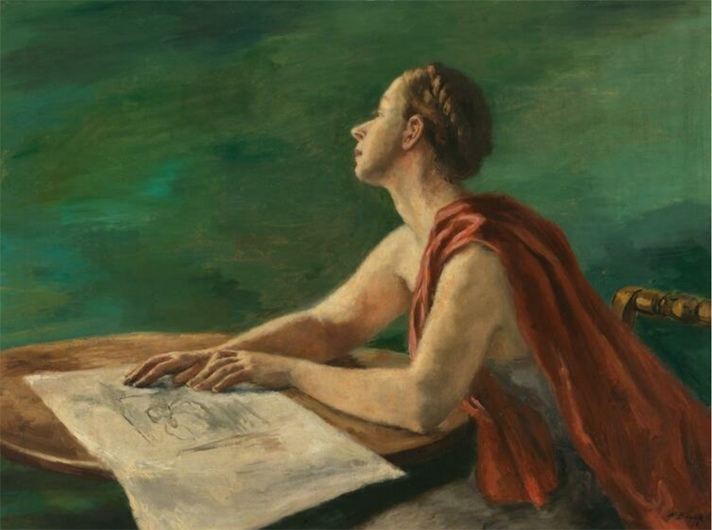
(image from whitney.org)
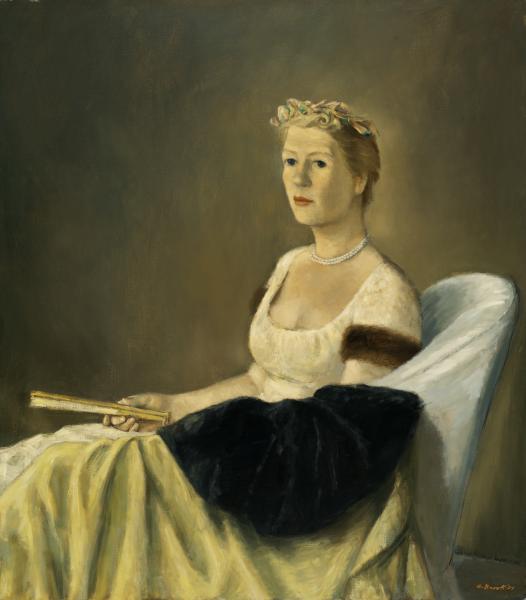
(image from americanart.si.edu)
I really don't care what the Times or other critics say, these murals in the Clinton Federal Building are objectively somber due to both Brook's style and the subject matter. In 1939 Brook was commissioned to paint several murals under one of the New Deal art programs. These are titled "Writing the Family Letter" and "Reading the Family Letter," which depict families who were separated due to relief efforts in the Great Depression and who depended on letters to keep them emotionally connected.
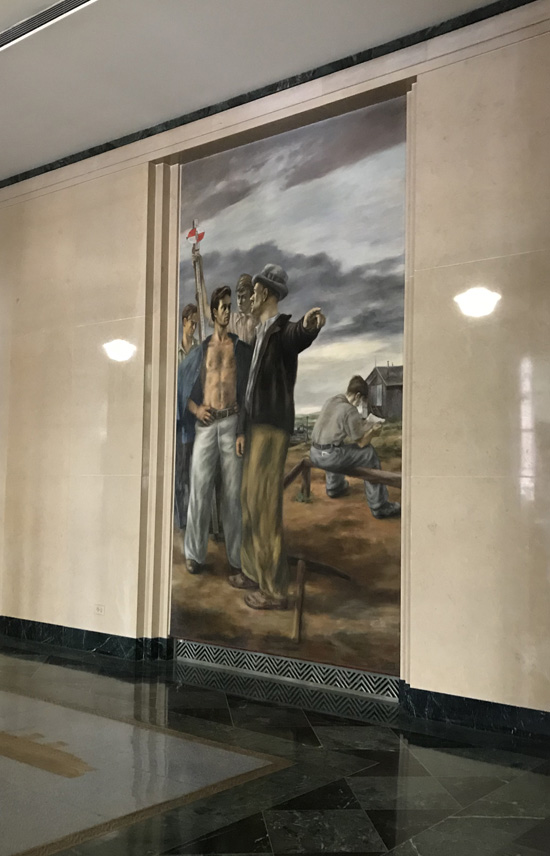
(images from gsa.gov)
Overall, while I appreciate the no-frills approach and quiet dignity with which he painted all his subjects, I didn't find Brook's style all that enthralling. But if you're so inclined you can buy his monograph.
Next we have Mrs. Stanley G. Chamberlain, formerly known as Esther Carolyn Nice. Esther was born around 1906, so that would make her about 43 in 1949 when the ad was released. I'm amused by the fact that Dorothy Gray not so subtly paired an over-40 woman with ad copy discussing how one could maintain the "precious bloom of youth" in her 40s by using their products. I wish I had some details on Esther's life besides the fact that she and Stanley had three children. Esther passed away suddenly on November 23, 1968.
There was plenty of information on the artist behind Mrs. Chamberlain's portrait, however. William Coffield Fields, III was a highly successful portrait artist, consistently painting and exhibiting his work from the early 1940s until the 1990s, when he increased his focus on local history and genealogy. A native of Fayetteville, North Carolina, Fields graduated from the fine arts program at the University of North Carolina in 1938 and later studied at the Museum of Fine Art in Boston – probably how he got the attention of the Boston-based Chamberlains. But for most of his career he divided his time between New York City and Fayetteville. In 1951 he spent 7 months in Italy, painting portraits of Pope Pius XII, Prince Ludovico Chigi, and the Prime Minister during World War I, Vittorio Orlando.
Fields believed that a good portrait didn't necessarily require technical skill; a rapport with the sitter was more important in conveying their personality. "A portrait should be an encounter. You should know something about that person when you look at it," he stated in 1980. Though he painted many well-to-do women and other notable people throughout his career, Bill seemed fairly down to earth, teaching regularly and volunteering for a number of local arts organizations. He thought being referred to as an artist was pretentious, and preferred to be called a portrait painter. Plenty of middle-upper class families commissioned him for portraits, which makes me think he charged more affordable rates than his peers or worked on a sliding scale. Coupled with the fact that there were no mentions of Esther in the society pages, I'm guessing the Chamberlains kept a low profile or perhaps were not as astronomically wealthy as some of the other ladies in this series given their choice of artist. Fields passed away in 2007, having left a vast body of historical work on Cumberland County, NC as well as his portraits (none of which I could find online, alas.)
Next we have Brooklyn-born Gertrude Gretsch Astor (1923-1999), who married multimillionaire John Jacob Astor in September 1944. While she was technically a debutante, having made her debut at a grand party in 1941, she was also described as "non-social".
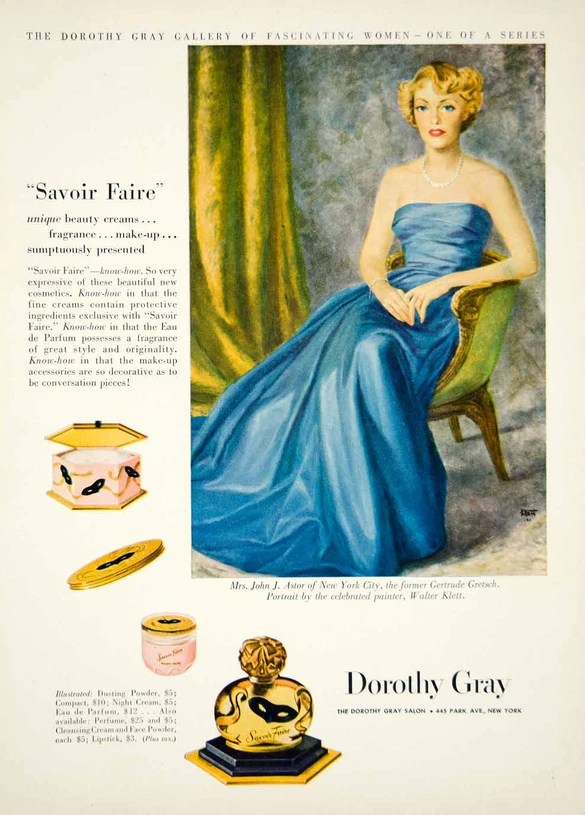
(image from periodpaper.com)
After 6 years of marriage to Astor and one child, a nasty and drawn-out divorce ensued, with Gertrude citing Astor's "innumerable and shameful associations with a variety of women" as the impetus for divorce proceedings. It was, as you could imagine, quite scandalous at the time. But don't feel too bad for Ms. Gretsch, as ultimately she was provided with $3,000 (or $28,000 in 2021) per month in alimony. She eventually got remarried to Italian director/playwright Sonio Coletti in 1968. Gertrude passed away on January 16, 1999.
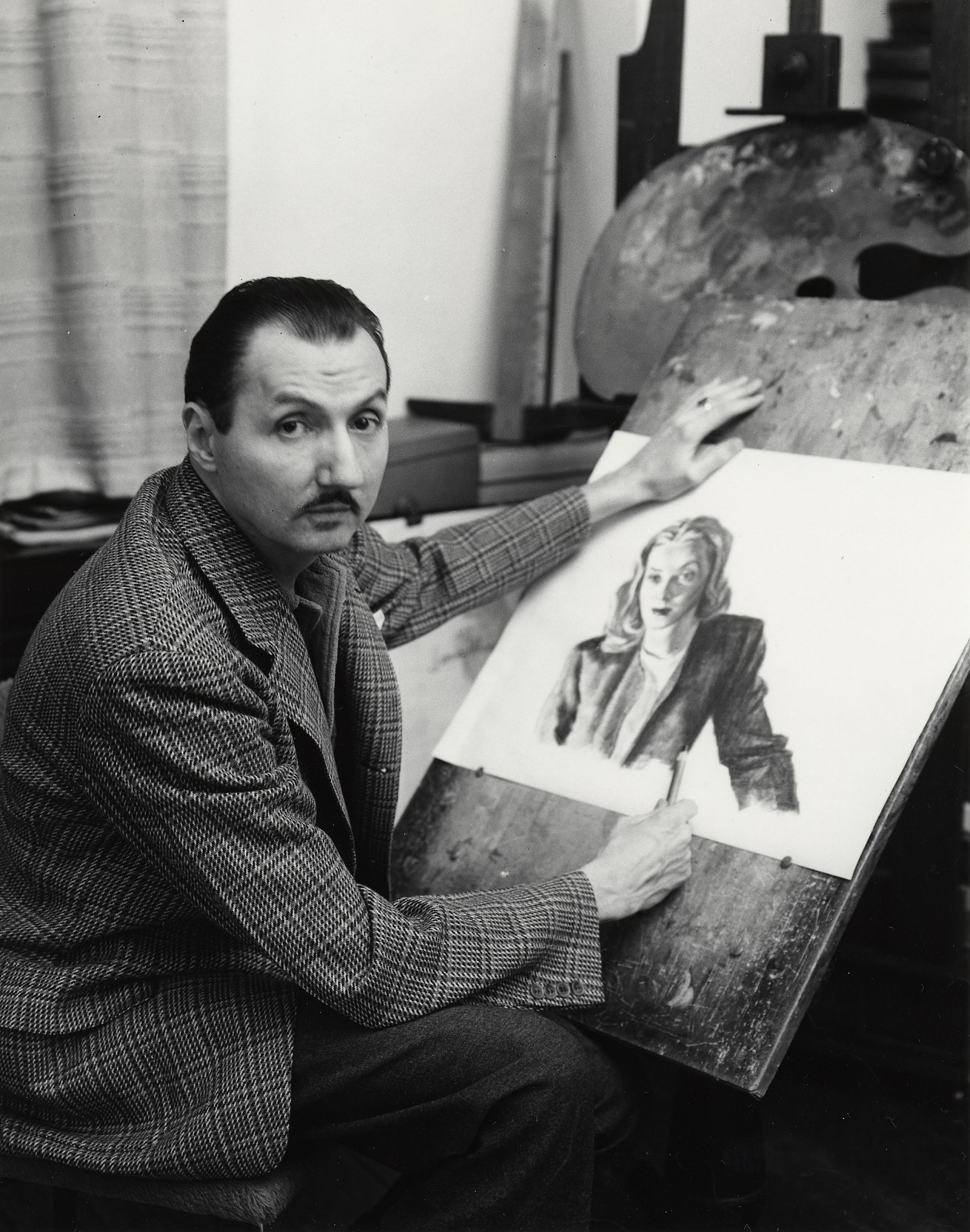 Walter Charles Klett (1897-1966) was primarily known not for portraits but for his figurative paintings and commercial work for magazines such as Collier's, including this racist gem of a cover. Born in St. Louis, he attended the School of Fine Arts there before heading to Chicago in 1925. Three years later he and his wife moved to New York, where he remained until his death in 1966.
Walter Charles Klett (1897-1966) was primarily known not for portraits but for his figurative paintings and commercial work for magazines such as Collier's, including this racist gem of a cover. Born in St. Louis, he attended the School of Fine Arts there before heading to Chicago in 1925. Three years later he and his wife moved to New York, where he remained until his death in 1966.
Klett published a very well-received guide to figurative paintings in 1948. Said one critic, "The artist declares he is a painter of women, and he definitely prefers glamorous women, and this predilection, he believes, damns him in the eyes of contemporary painters whose brushes are moved by anything but beauty." Klett's women are indeed glamorous, but there's also a sensuality about them that borders on classic pin-up style.
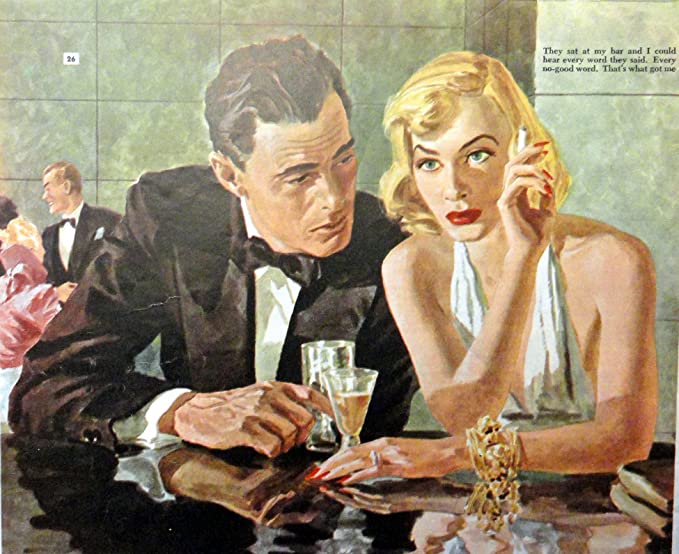
(image from amazon.ca)
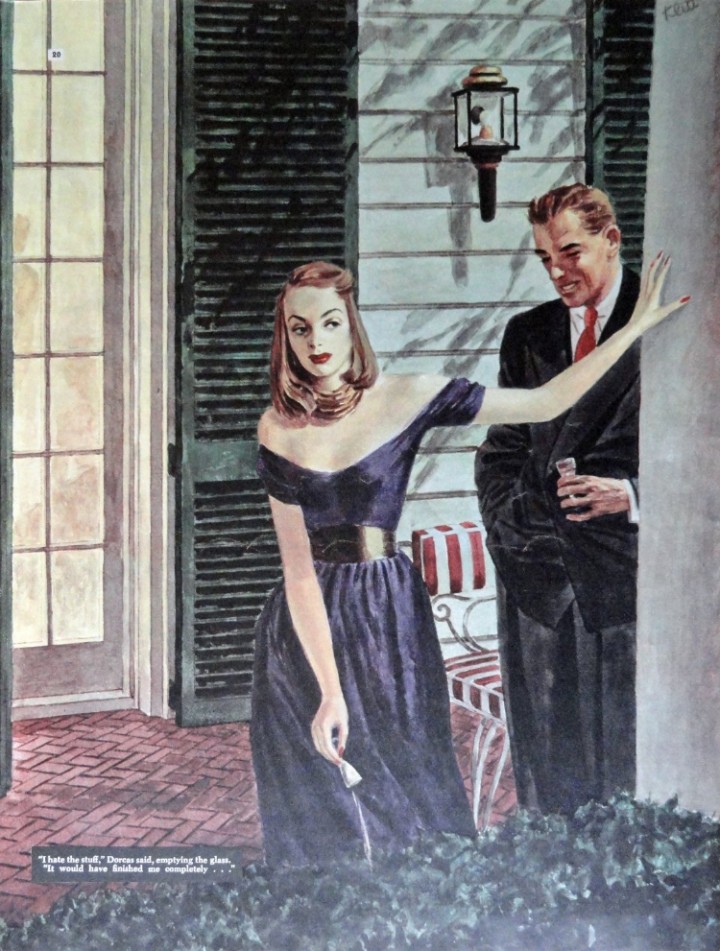
(image from ebluejay.com)
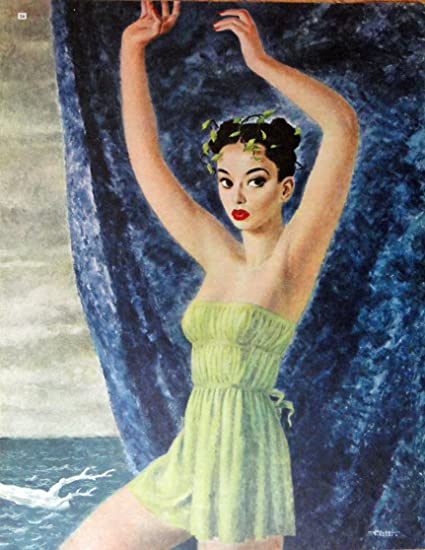
(image from amazon.co.uk)
Turns out, Klett did illustrate a pin-up for Esquire.
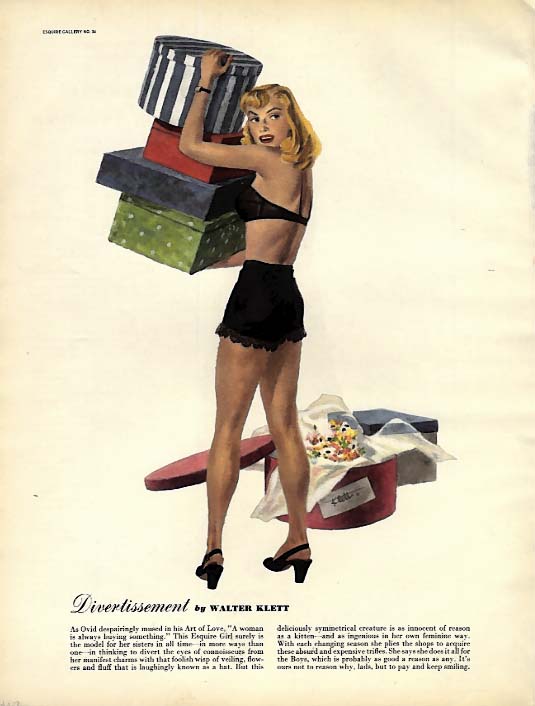
(image from thejumpingfrog.com)
Later in his career Klett experimented with pastels and watercolors, lending a softer, airier feel. This 1959 painting reminds me a bit of Matisse.
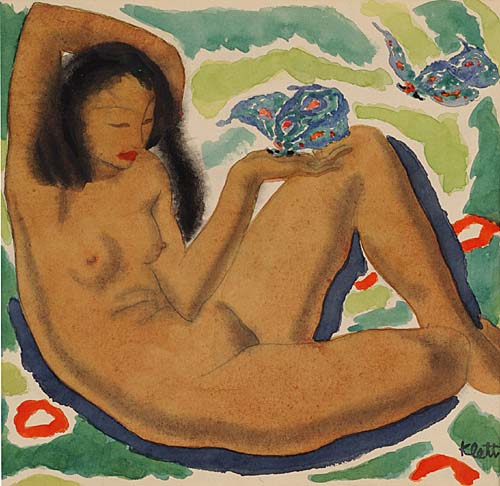
(image from invaluable.com)
Up next is Mrs. John A. Morris, formerly known as Edna Brokaw. Edna, a statuesque (she was 5'10"!) beauty with a wicked tennis game, made her debut in 1928 and married John, a Harvard graduate/stockbroker on May 27, 1942. The wealthy Morris family was known for thoroughbred horse-racing and breeding, with their all-scarlet racing silks dating back to 1840. Dorothy Gray used Edna's portrait to advertise a fairly simplified, no-nonsense skincare routine, which seems fitting for her. And the mention of "grooming" makes me think they were possibly referencing the grooming and care of the Morris' horses, which was a priority in their lives – the family actually established an equine research library at the University of Kentucky.
While she certainly enjoyed the perks of being rich, such as growing up in a mansion on 5th Avenue in New York, Edna was not interested in the socialite lifestyle. "I didn't want to be a deb. I wanted to go to college so much, but for girls like me it just wasn't done. My mother would have none of it," she said in a 1985 interview. I know, I know, let's break out the world's smallest violin, but for someone like me who, for the most part, abhors social gatherings, being forced to attend them daily as a career of sorts is my idea of hell. Before she got married, Edna worked as a nurse's aide and attended secretarial school. She refused to marry John until she had secured a job, as she needed to prove she could be self-sufficient. She was also consistently active in fundraising efforts for Girl Scouts from the 1950s until her death in January 1997 at the age of 88. I enjoy this photo from the 1985 interview in which she's wearing the same pearl necklace from her portrait nearly 40 years prior.
Jerry Farnsworth (1895-1983) was born of meager means in northern Georgia. Growing up he didn't have any real exposure to art until the age of twenty, when he attended an art exhibition for the first time. From that point on he knew he wanted to be an artist. He married Helen Sawyer in 1925 when both were art students under Charles W. Hawthorne, founder of the Cape Cod School of Art. In looking at both of their work I can definitely see the influence.
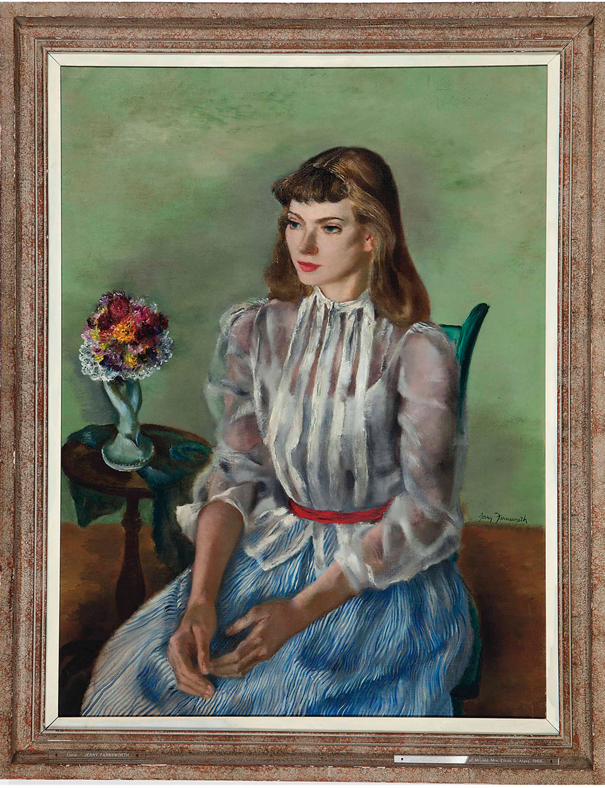 (image from christies.com)
(image from christies.com)
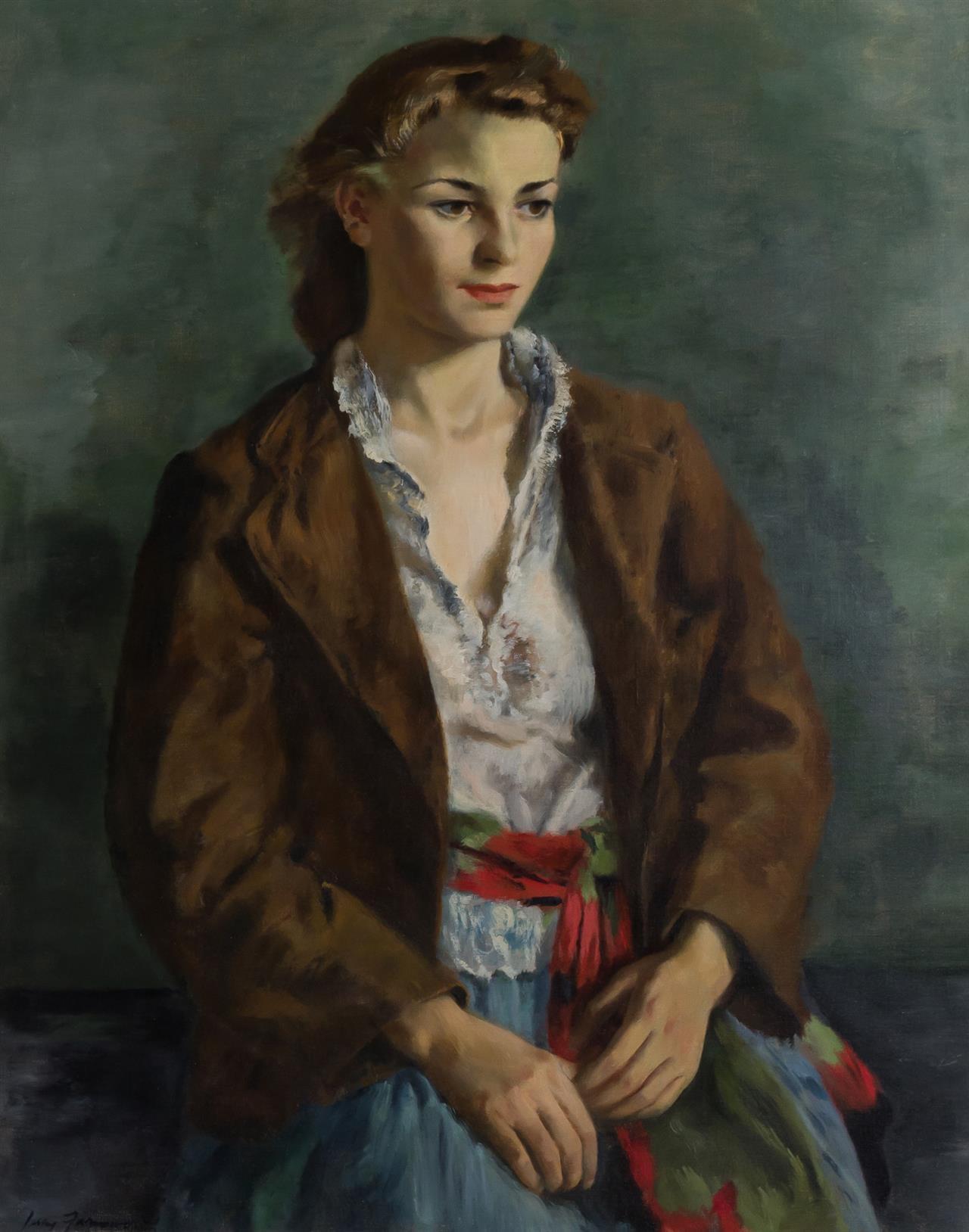
(image from invaluable.com)
Like his contemporary Alexander Brook, Farnsworth was best known for his portraits and his style didn't change much over time. One of his personal favorites was his portrait of Martha Truman, mother of the 33rd President of the United States, Harry Truman.
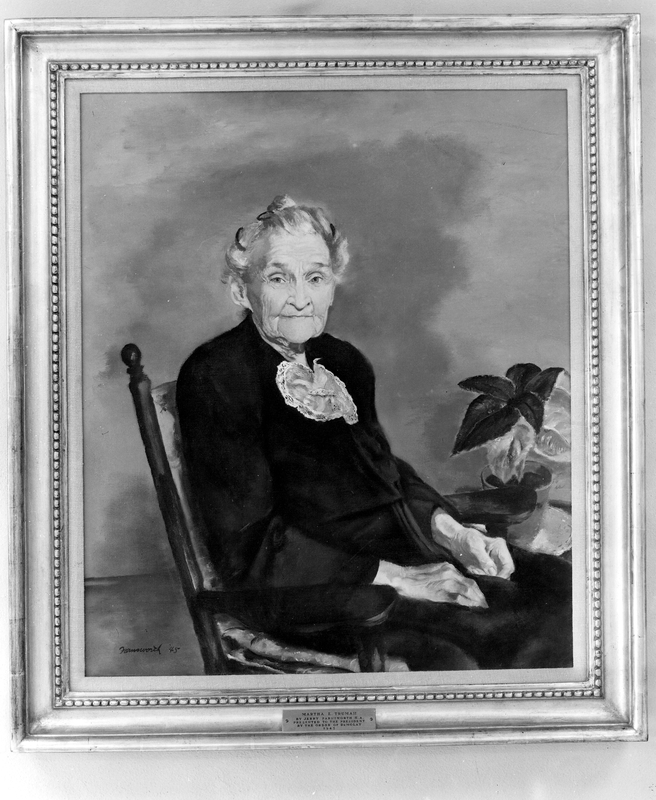
(image from trumanlibrary.gov)
Farnsworth was also recognized for his magazine covers such as this depiction of Hitler with a dog, which appeared on the cover of the March 13, 1933 issue of Time magazine.
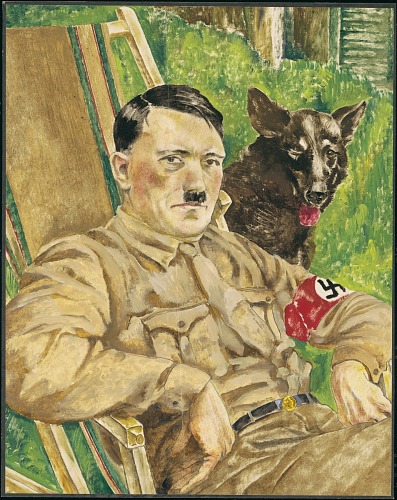
(image from npg.si.edu)
While I think his style is a bit livelier than Brook's, Farnsworth is not my favorite of this bunch. Still, I admire his dedication to arts education – he taught at many colleges, and he and his wife set up a summer art school in Massachusetts.
Coming in at portrait no. 5, here's Mrs. Farrell Steele, formerly known as Helen Fairfax Farrell. Helen was a textbook example of a Southern belle/debutante, coming from extreme wealth on both sides of her Nashville-based family.
Just to give you an idea of the kind of money we're talking about, Helen was the heiress to the Maxwell House coffee fortune. In 1925 her father purchased an English Tudor house situated on a 2,000 acre estate and named it Crieve Hall after his family's home in Northern Ireland. The family also had their own box at horse shows, and in 1940 Helen had $2,800 worth (or $52,600 in today's currency) of jewelry stolen from the family's summer home. I'm still trying to wrap my head around having that kind of cash.
Anyway, on October 7, 1944 at Crieve Hall, Helen married George S. Steele, a Yale graduate who worked for the Foreign Economic Administration in Washington DC. Exactly a year after their wedding day, the couple had a daughter. But the marriage would not last; just a few months later, in February 1946, Helen filed for divorce, citing "mental cruelty." While initially I had zero sympathy towards Helen and her family, I do feel bad that she was shipped off to boarding schools far away from her family growing up and then had to endure a marriage, however brief, to a possibly abusive husband. As you know, divorce back then was fairly stigmatized, especially among the wealthy whose every move was recorded by the press. I'm guessing many of the marriages between rich families were business mergers more than anything else, and they probably saw it as important to keep the money in the family for future generations. The fact that Helen got out of there so quickly and the official reason makes me think George was not a nice person. Of course, this is pure speculation and I hope that wasn't the case, and it's not my intent to go spouting baseless accusations. But something seemed off. Fortunately Helen got re-married to Theodore Mentis in 1971 and remained married to him until his death in 1982. Helen passed away in 2006.
Channing ("Uncle Bunny") Weir Hare was a noted society painter shuttling between his home base in Ogunquit, Maine and Palm Beach, Florida, so it stands to reason he captured Helen's likeness. Described as the "crown prince of society portrait artists," charging $3,000-$10,000 per portrait (or $44,000 – $146,000) as well as "flamboyant," Hare was known as much for holding elaborate parties for other artists and top socialites as he was for his art. Hare was also gay, though not legally out of the closet for most of his life – he separated from his wife, whom he married in 1929, but never divorced her, remaining married (on paper, anyway) until her death in 1966.
Hare bristled at being called a society painter, though society portraits allowed him to make a good enough living to eventually purchase a grand Mallorcan palace with a butler, chef and 16 servants. As Palm Beach portrait artist Richard Banks remarked in 1990, "Channing Hare could be vicious and cruel, but he was also a terribly funny guy who would just woo those ladies. He had bought a place in Majorca and when he knocked off a portrait, he'd say, 'Well, there's another bathroom for the house.'" He was also somewhat picky about who he chose to portray. "Please don't call me [a society painter], because when they call you that, they don't take your work seriously. Besides, I'm in too many good museums…often I paint people who just interest me," he noted in 1970.
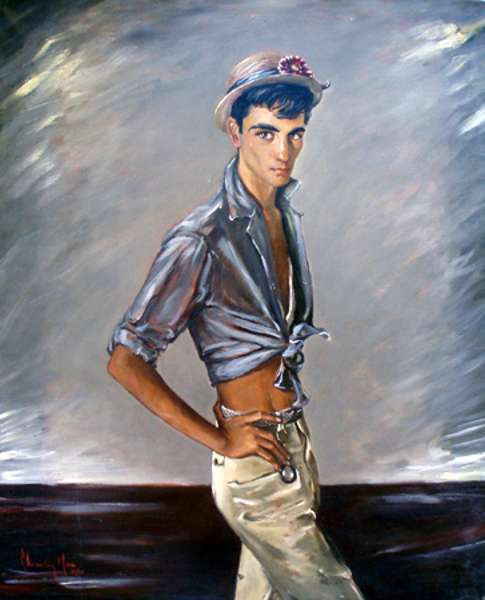
(images from americangallery20th.wordpress.com)
Like Fields, Hare painted many people of note, including members of European royalty and the Vanderbilts in the U.S. He also did not work from photos unless it was absolutely necessary, preferring to paint from the memory of his experience meeting the sitter. Perhaps the reason he was able to command such renown was the fact that he often embellished the attractiveness of his sitters, painting them in the most flattering way even if it meant stretching reality a bit. "Channing's gift was to make people look their very best…he was very elegant himself, and a teensy bit snobbish. He was a portraitist, but he once told me, 'I don't like people, but I like some people'…with Channing, you never knew if he was telling the truth," reminisced former Palm Beach art dealer James Hunt Barker in 1997.
While portraits were his focus, Hare occasionally dabbled in still-life and Surrealism.
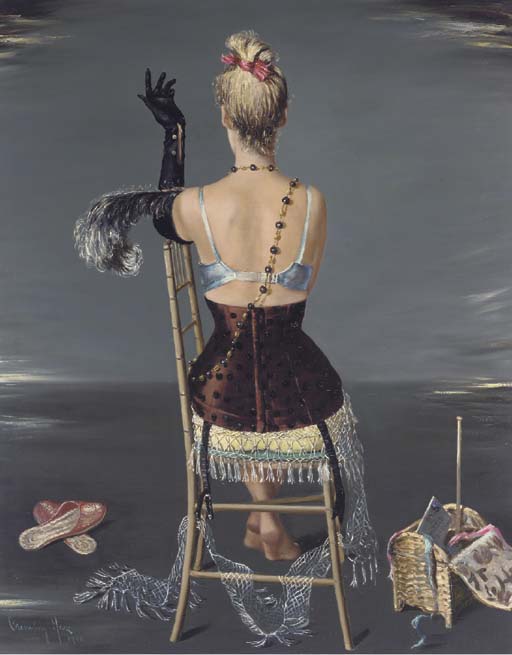
(image from christies.com)
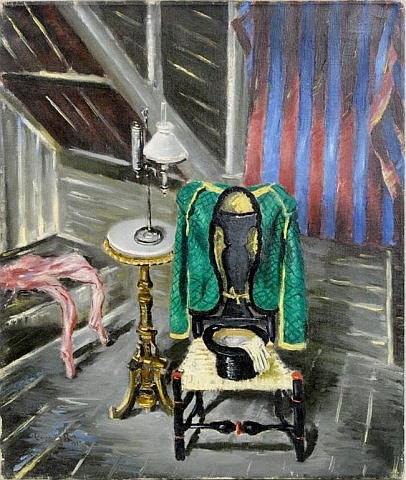
(image from invaluable.com)
Hare passed away on February 12, 1976, leaving behind his adopted son Stephen "Stevie" Hare, who also became a painter.
Last one for today! Speaking of flamboyant, I wonder if Dorothy Gray chose to feature their "Flamboyant" shade to complement the bold red dress and lip color worn by Mrs. John W. Eiman, formerly known as Daisy Biddle.
On June 4, 1948, Daisy married John, a doctor (pathologist) who graduated from Princeton. Having grown up near Philly I can tell you the Biddles are very old money, and the places mentioned in the news coverage on Daisy (Bryn Mawr, Haverford, etc.) are part of what's known as the Main Line, a.k.a. one of the wealthiest areas in the U.S. But Daisy was not just your average rich socialite. She attended the prestigious Moore College of Art and Design, and later in life had her paintings included in several local exhibitions. I'm so disappointed I couldn't locate any photos of her work! While she hasn't updated her Facebook page since 2014, I couldn't find an obituary so I'm hoping she's actually still alive, enjoying her retirement in Vero Beach, Florida. 🙂
Born in Chicago in 1899, Roy Spreter arrived in the Philadelphia area in 1926 and remained there until his death in July 1967. While he was largely recognized for commercial illustration, later in life his talent as a portraitist was better acknowledged. Spreter created heartwarming, family-oriented ads and covers for the likes of Log Cabin syrup and the Woman's Home Companion, very much in the Norman Rockwell vein of illustration.
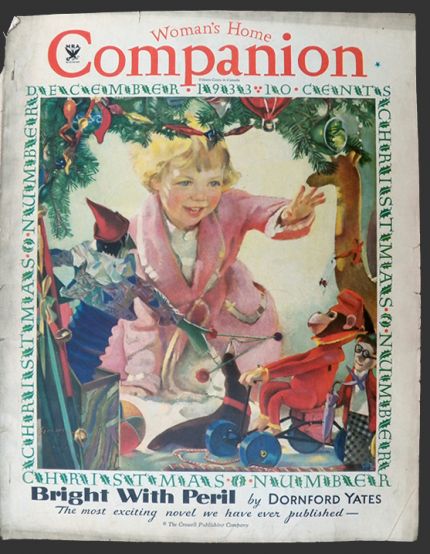
(image from atticpaper.com)

(image from americangallery20th.wordpress.com)

(image from monroestreetbooks.com)
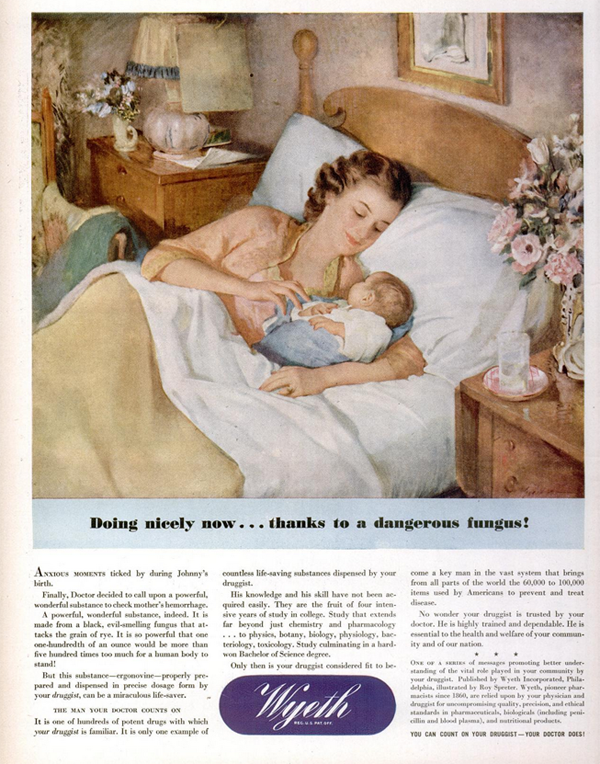
(image from Life Magazine, 1944)
Spreter's likenesses of women by themselves, I think, are much more skillful and sophisticated than the domestic scenes he created for brands.
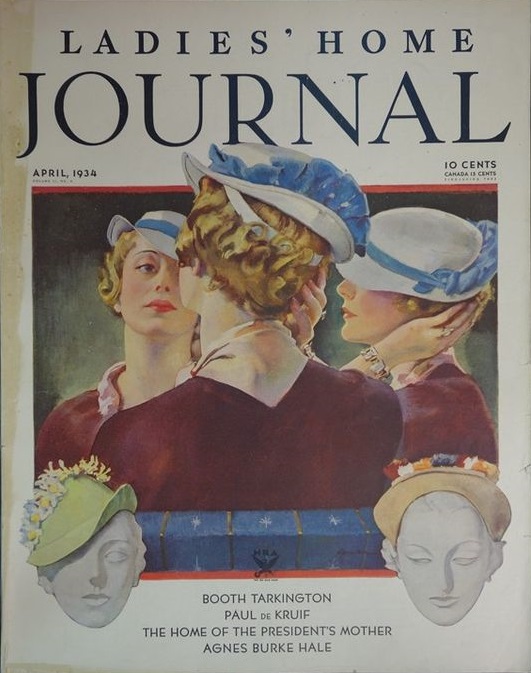
(image from pinterest)
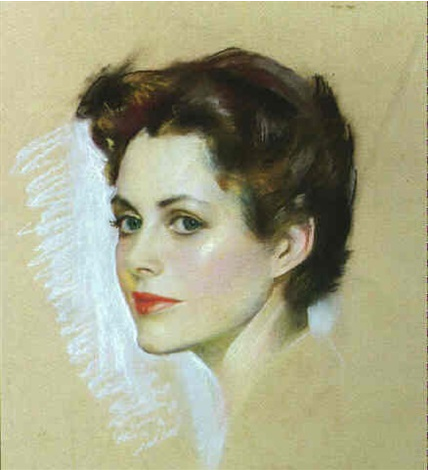
(image from artnet.com)
Interestingly, here's a 1927 portrait of Joel O. Cheek, grandfather of Helen Fairfax Farrell.
While I find Spreter's portraits to be much less saccharine and more visually appealing than his commercial work, I think it would have been very interesting to have Daisy paint a self-portrait and use that for the Dorothy Gray ad.
There are 5 ladies left which I will feature eventually. Right now I'll continue pondering why Dorothy Gray launched this campaign, how they chose the women they did, why they didn't use Hollywood starlets like other brands, etc. Obviously Dorothy Gray was trying to appeal to upper class customers and define good taste by linking their products with fine art and well-to-do ladies, but there must be more to it than that.
Here are some questions for you: which woman of these 6 would you liked to have lunch with, if any? And which artist would you commission to paint your portrait? While I think the vast wealth gap would make it impossible to befriend any of these women, I like to think I'd get along with Daisy since we could talk about art. And while I enjoy Hare's portrait style the most, I'd hire Bill Fields since he seemed the nicest. 🙂
Stay tuned for part 2, when I'll discuss the rest of the ladies' portraits and some lingering questions about the series.


